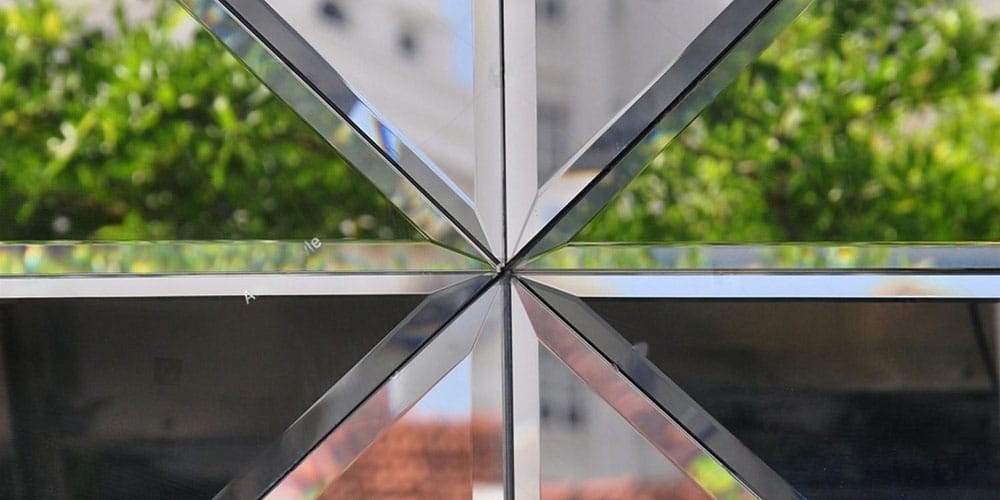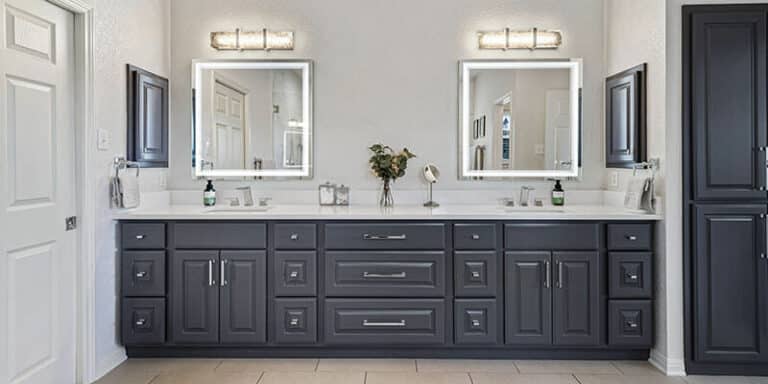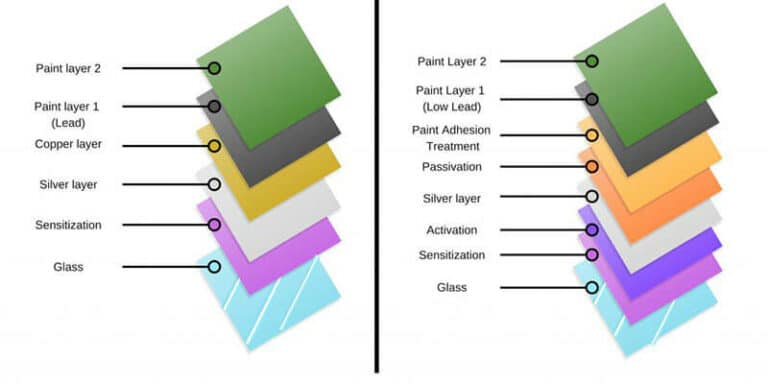A beveled mirror stands out with its unique design.
A beveled mirror has edges that are cut at an angle, giving it a polished border that enhances its elegance.
These mirrors can add a touch of sophistication to any room, making them a popular choice in homes and businesses.
In the world of interior design, beveled mirrors are appreciated not just for their looks but also for their functionality. They reflect light in a way that can brighten a room and make it appear larger. This attribute makes them an excellent addition to spaces where you want to create an open, inviting atmosphere.
What Is A Flat Mirror?
A flat mirror, also known as a plane mirror, is a mirror with a perfectly flat reflecting surface.
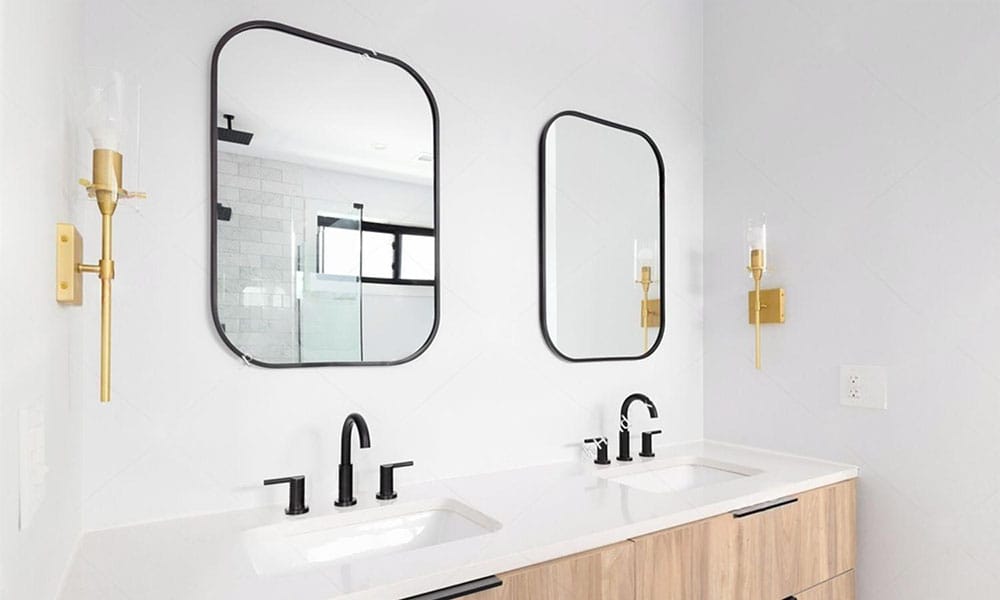
Common Uses:
- Barbershops: Flat mirrors are essential for stylists to provide precise cuts and trims.
- Dressing Rooms: You often find them in dressing rooms to help you see your outfit clearly.
Characteristics:
- No Beveled Edges: Unlike beveled mirrors, flat mirrors have smooth edges.
- Clear Reflection: The mirror offers a true reflection, making it ideal for settings where accurate representation is important.
A flat mirror creates images that are the same size as the object being reflected, ensuring you see yourself just as you appear.
What Is A Beveled Mirror?
A beveled mirror offers a unique design by having a polished, angled border. This border creates a frame-like appearance even without an actual frame. The edges are specifically cut and sloped, enhancing the visual depth and elegance of the mirror.
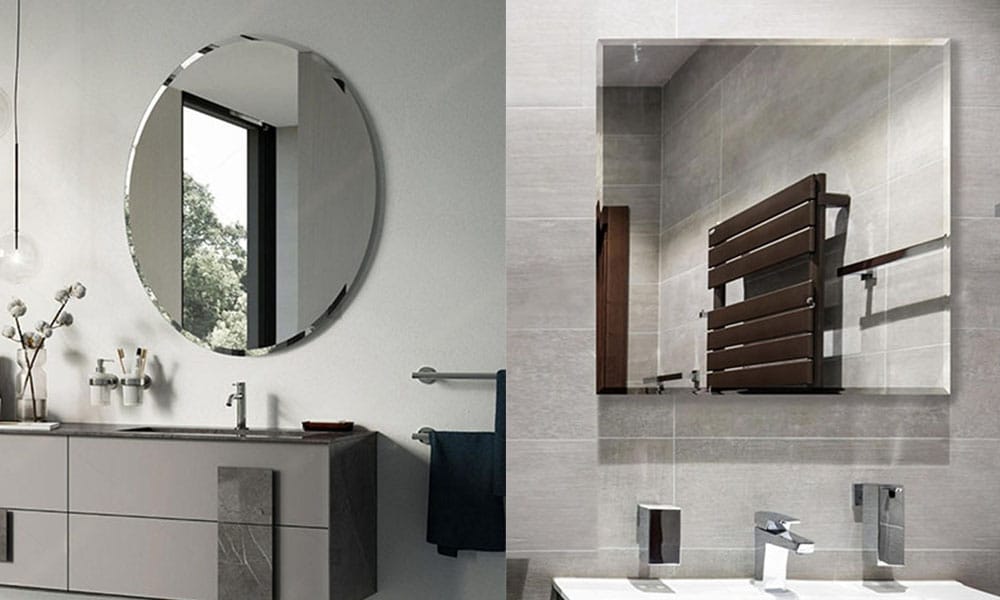
When it comes to the width of the bevel, it typically ranges from 1/2 inch to 2 inches. This variety in sizes allows you to choose a mirror that best fits your style and space requirements.
The beveling process not only adds to the aesthetic charm but also affects the thickness of the edges. The process reduces edge thickness, commonly from 1/4 inch to 1/8 inch, creating a sleek and refined look, making beveled mirrors a popular choice in many homes.
Incorporating a beveled mirror into your space can add a touch of sophistication. These mirrors are crafted by skilled artisans, ensuring each piece has a high-quality finish.
History Of Beveled Mirrors
Early mirrors were crafted from polished bronze or silver and were used by various ancient cultures. These mirrors were simple and lacked the elegant design we see today.
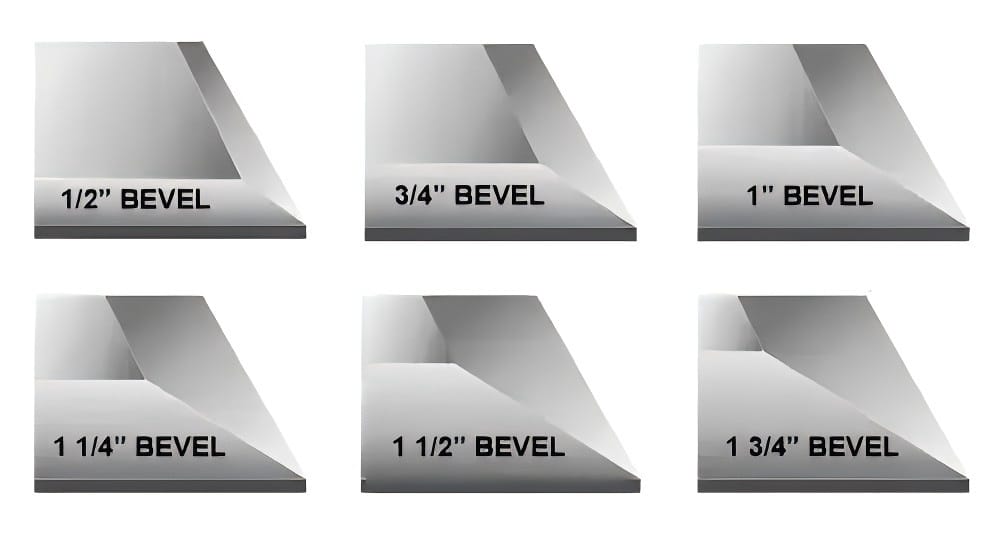
In the mid-16th century, the art of mirror making evolved significantly in Venice. Venetian craftsmen began commercial production using glass, mercury, and tin, leading to more refined and ornate mirrors.
The beveling process started to develop as well. Craftsmen used stone or steel wheels to carefully carve angled edges around thick pieces of glass. The process was slow and required skill. Pumice was often used on cork wheels to polish the bevels, achieving the desired effect.
Beveled mirrors gained popularity in the 18th and 19th centuries, particularly favored in countries like the United Kingdom, France, Italy, and Germany. Their elegant design made them a symbol of luxury and craftsmanship.
By the early 20th century, beveled mirrors were mostly handcrafted and considered a luxury. They were often used by the wealthy, showcasing their status and elegance.
Bevels on mirrors act like prisms, reflecting light and creating fascinating color patterns. This feature, along with the intricate craftsmanship, contributed to their timeless appeal.
How Is Beveling Of A Mirror Done?
Beveling involves cutting and polishing the mirror’s edges to create a sleek, angled surface. This process gives mirrors a decorative look and safe, smooth edges. Beveled edges make mirrors appear framed even without an actual frame.
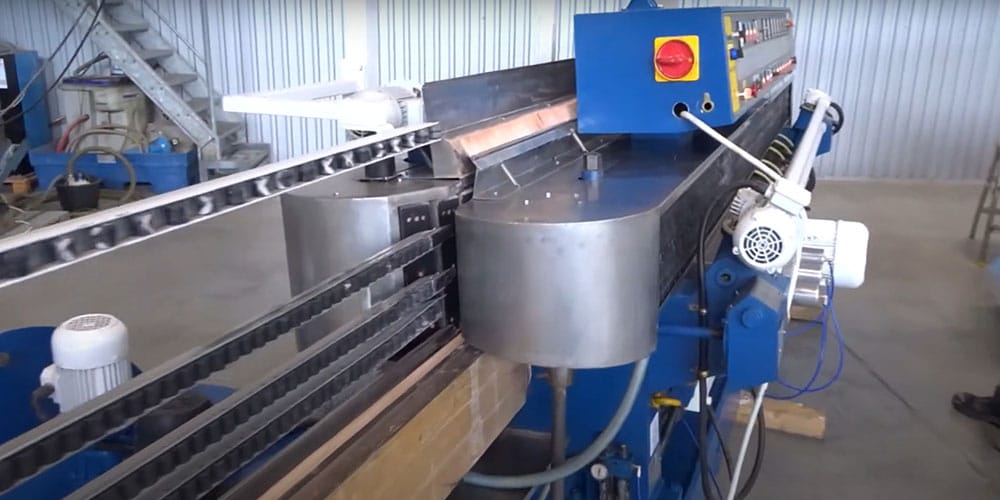
Steps in Beveling:
- Removing Glass: Excess glass from the edges is removed using a beveling machine.
- Polishing Edges: The newly cut edges are polished with diamond wheels to smooth them out.
- Finishing Touch: Cork or felt wheels are used for a final polish to ensure a flawless finish.
A beveling machine is an essential tool in this process. It precisely cuts the edges to the desired angle and thickness, often using a series of diamond wheels for precise shaping and smooth results. This helps achieve the distinct angled surface characteristic of beveled mirrors.
With these steps, you can transform a plain mirror into an elegant piece with beautifully cut and polished edges.
Where Are Beveled Mirrors Typically Used?
Beveled mirrors can be found in various places throughout a home. One common location is the bathroom, where they are often used as bathroom mirrors. Their reflective surfaces help enhance space and light.
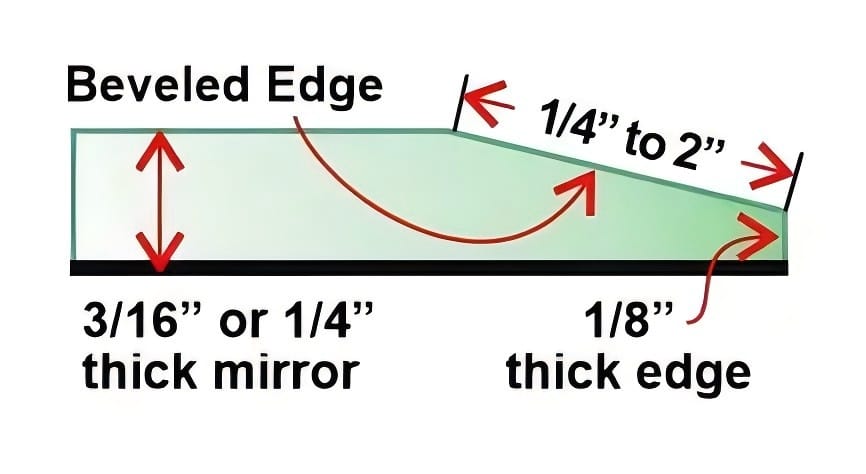
In living rooms and dining rooms, these mirrors serve as beautiful focal points. They add elegance and charm to any space, drawing attention with their unique edges and reflective surfaces.
If you’re looking for decorative pieces, you might find beveled mirrors in antique shops or home décor stores. They come in various styles that can match different interior design themes, from modern to classic.
Using a frameless mirror with a beveled edge can also create a sleek and seamless look. This design form is perfect if you want a minimalist appearance without compromising style.
Overall, these mirrors are versatile and can enhance the interior design of many rooms. Whether used for their practical purposes in bathrooms or purely for decoration, they help make spaces feel more open and inviting.
Advantages Of Beveled Mirrors
Beveled mirrors offer a range of visual effects that enhance any room. The edges of a beveled mirror create a frame-like look, adding style and sophistication without the need for a heavy frame. This enhances the aesthetic appeal of the mirror, making it a standout decorative piece.

One of the main advantages is the increased brightness. The beveled edges reflect light in multiple directions, creating a unique rainbow effect. This effect not only brightens the room but also adds depth and dimension, making your space appear larger and more open.
Safety is another significant advantage. The edges of beveled mirrors are carefully polished, reducing sharp corners and imperfections. This makes the mirrors safer to handle and install, especially in areas where safety is a concern. You can enjoy the beauty of the mirror without worrying about jagged edges.
Overall, beveled mirrors combine beauty, functionality, and safety, making them a preferred choice for many homeowners. Whether used as a focal point or a subtle accent, they bring elegance and utility to any space.
How To Choose The Right Beveled Mirror
When choosing a beveled mirror, start by considering the size. Measure the space where you plan to hang it. Ideally, the mirror should be a few inches narrower than the furniture or wall section it is positioned above.
- Consider the width of the bevel. A wider bevel gives a more luxurious appearance, while a narrower one is subtler. For example, a 1¾” bevel can enhance the room’s elegance.
- Pay attention to placement. Mirrors in smaller rooms can make the space appear larger. Position your mirror to catch light and reflect it into the room.
- Match the mirror with your room decor. If your decor is minimalist, a frameless beveled mirror might work. With a more traditional style, opt for a mirror with a decorative frame.
- Consider the installation method. You can use adhesive for a sleek, modern look. Mirror clips are an alternative that provide a decorative touch and also ensure the mirror is secure.
- Shape: Decide whether you prefer a rectangular or round shape. This choice can influence the style and feel of the room. A round mirror can soften the decor, while a rectangular mirror adds a more classic statement.
